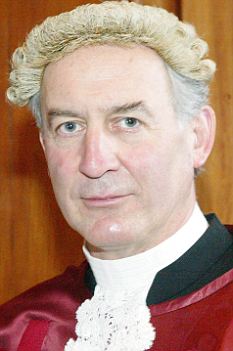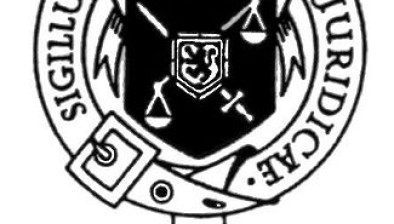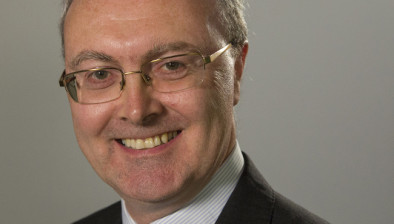Exclusive: Lord Glennie questions ‘straitjacket’ of Moorov doctrine

Lord Glennie
A judge has questioned why the courts require facts to be “squeezed into a Moorov straitjacket” instead of recognising a more general principle admitting similar fact evidence where relevance is established.
Lord Glennie made the obiter comments in a judgment allowing the appeal against conviction of a man who had been found guilty of rape and other sexual offences committed against two complainers.
At trial, the Crown relied on the principle of mutual corroboration, associated with the decision in Moorov v HM Advocate 1930, in seeking the conviction of RBA.
The Moorov doctrine is a rule that holds that the evidence of one witness can corroborate the evidence of another in certain situations if the Crown can prove that the accused’s offending was part of a course of conduct, systematically pursued.
Counsel for the accused, Tony Lenehan, had argued that the doctrine was inapplicable because of the interval between the relevant conduct relating to each complainer’s charges. But his no case to answer submission was repelled by the trial judge, who thought that a single course of conduct was available for consideration by the jury.
The appeal has, however, been unanimously allowed by the High Court of Justiciary Appeal Court comprising Lord Brodie, Lord Malcolm and Lord Glennie. The judges found that the incidents could not be given the character of a single course of conduct as required by the doctrine.
But Lord Glennie said that he had “considerable misgivings about having to reach this conclusion”.
He said that “it is difficult as a matter of principle to see why the availability of the evidence about one incident as potential corroboration of the evidence concerning the other should depend on whether the circumstances of the two incidents can be squeezed into a Moorov straitjacket”.
He asked: “Why should it be an essential part of the doctrine of mutual corroboration that the several incidents must all be part of a single course of conduct persisted in by the accused?
“Surely the doctrine can work just as well without being tied to such a requirement – why is it not enough that the conduct of the accused in relation to each separate incident, as spoken to by the different witnesses, can reasonably be regarded by a jury as supporting (or corroborating) the evidence of other witnesses to other incidents of a similar kind, without the need to wonder whether the various incidents can or cannot be regarded as all part of the one course of conduct persisted in by the accused?”
The judge questioned why the Moorov doctrine was not seen “as but one example of a broader principle allowing similar fact evidence to be admissible where its relevance is established.”
Were a broader rule in place, Lord Glennie said that in the present case “I can see no basis for thinking that this court would have interfered with the verdict of guilty returned by the jury”.
In the absence of the single course of conduct requirement demanded by the rule, Lord Glennie also implied that the stretching of the doctrine “beyond its natural breaking point”, as attested to in case law, would be unnecessary as the facts would be accommodated by a broader principle.
Lord Malcolm said: “Lord Glennie may well be correct in observing that on occasion judges have stretched the doctrine of mutual corroboration as presently framed beyond its breaking point, and no doubt respectable arguments could be mounted in favour of a broader approach based on a ‘similar facts’ rule along the lines of that deployed south of the border”.
Solicitor Eamon Keane, co-editor of Raitt on Evidence: Principles, Policy and Practice, told Scottish Legal News: “The obiter comments from Lords Malcolm and Glennie illustrate neatly the tensions inherent in the debate surrounding the operation of the Moorov doctrine today.
“Due to the corroboration requirement, the doctrine is absolutely essential for the Crown in seeking to prosecute mainly, but not exclusively, historical sexual offences often committed within a domestic setting over the course of a number of years.
“No doubt due to the doctrine’s utility in this regard, the High Court has adopted a piecemeal expansive interpretation of same that has rendered its application somewhat uncertain at times and arguably pushed the meaning of ‘course of conduct’ beyond the boundaries of any common sense understanding of that term. It should be said, however, that the High Court has maintained, fairly in my opinion, that the development of these changes has been to reflect shifts in societal understanding of sexual and other offending.”
Mr Keane, who is currently co-writing another textbook on Scots law and sexual offences, added: “My own view is that the current state of the law is unsatisfactory and that this judgment should at least spark a debate about the doctrine’s continued existence and operation.
“The Scottish Law Commission previously argued in 2012 that there should be a statutory restatement of the common law principles surrounding the admissibility and relevancy of all ‘similar fact’ evidence (a term of art not known in Scots law) and a consequent abolition of any requirement for the Crown to establish ‘a course of conduct’ in cases of this sort – a view shared by Lord Glennie – in order to establish a sufficiency of evidence.
“Such an approach appears to have merit to me. Plenty would no doubt argue that what is actually required is a more consistent rigid application of the principles espoused in Moorov itself. In any event, the judgment in RBA provides plenty of food for thought.”









